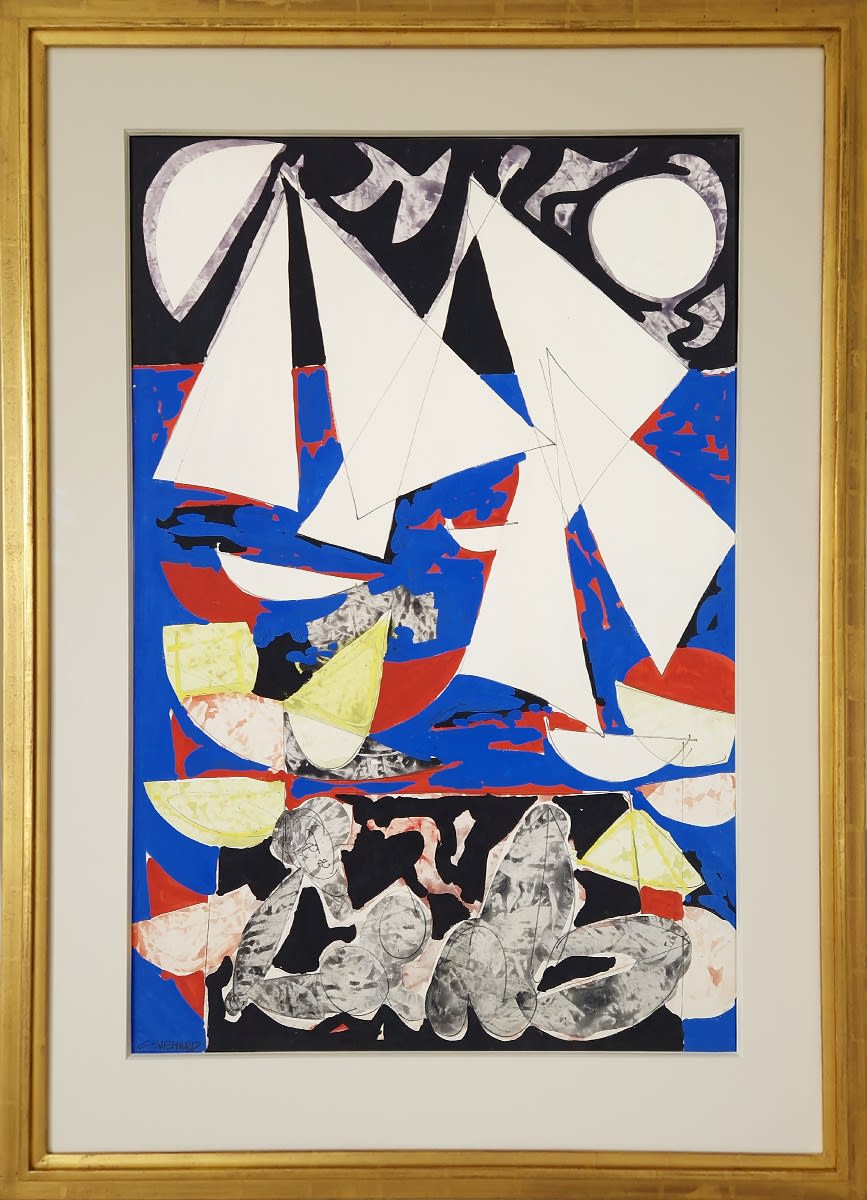Charles Martin-Sauvaigo was born in Carras, near Nice, into a family of farmers. At a very young age he encountered the artist Felix Ziem who greatly encouraged him in his ambition to become a painter.
Charles Martin-Sauvaigo enrolled in the École Nationale Supérieure des Beaux-Arts in Paris and quickly found success winning several competitions and receiving his first commissions from the Perfecture des Alpes-Maritimes, Nice Chamber of Commerce and the Lycée Masséna, also in Nice.
Charles Martin-Sauvaigo exhibited at the Salon des Artistes Français from the age of twenty four, winning prizes in 1921 and 1923 and the gold medal in 1937. In 1922 he became the official artist of the French Navy based in Nice. He exhibited throughout his career in various Parisien galleries, receiving many commissions including one for an immense diorama of over 400 square metres to decorate the Cote d'azur Pavilion at the 1937 Exposition Universelle de Paris. He also created many paintings for luxury liners of the era, including the SS Île de France.
Martin-Sauvaigo's love for his native 'pays Niçoise' and Provence always guided and inspired his paintings. He depicted the ports, peasants and landscapes of the area before the great changes brought by tourism, in a colourful but restrained palette, always capturing the unique light of the region.
La Provence - Moulin de Daudet represents a capriccio of the area around Fontvielle, depicting that town, a view of Les Baux-de-Provence and the windmills of the surrounding area including the Moulin de Daudet. This windmill inspired the writer Alphonse Daudet to write a short story - Le Secret de Maître Cornille. This painting was exhibited at the New York World's Fair in 1939, 'The World of Tomorrow' being the theme of the Fair.
Examples of Charles Martin-Sauvaigo's paintings can be found at the Musée Massena in Nice, and Musée d'Art Moderne in Paris.
Martin Sauvaigo was made an Officier de la Légion d'Honneur in 1929. He died in 1970.


